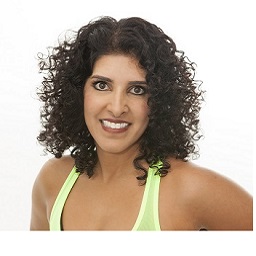I want to be that person who can look past a person’s height, size, shape and fashion sense, but I’m not. Instead, the moment I meet someone, the cornucopia of my life experiences unfolds in my head and guides me to make an assumptive judgment about them.
Your purse may tell me your socioeconomic status, your shoes may define your profession, your skin color may tell me where you grew up and your accent might give me a sense of your education.
More importantly, your posture tells me a whole lot about your personality.
Judged by your posture? You’ve probably never even thought about this. In fact, studies have shown that your body language can influence the way you are perceived by others. Amy Cuddy, a social psychologist from the Harvard Business School, determined that assuming a powerful stance can increase power hormones (testosterone) and decrease stress hormones (cortisol). If you’re able to feel these physiological changes in yourself, it will be reflected in the way others perceive you.
How might you be judged by your posture?
Let’s start with the feet.
Posture begins from the ground up.
A lot of people these days walk with feet in an externally rotated position, or as I like to coin it, “duck feet”. The gait cycle, which is the technical term for the manner in which you walk, is compromised. Instead of walking with a confident stride and a spring in your step, this gait cycle can often resemble a shuffle step, and you may hear more “clomping” than you’d like.
With a duck walk, the body sways more than it should, giving the appearance of unsteadiness. The “duck walk swagger” can leave an impression of awkward and inflexible.
Wherefore Art Thou Pelvis?
A lifestyle of sitting has wreaked havoc on the pelvis, with the most awful of pelvic postural deviations being the posterior pelvic tilt.
Our bodies are supposed to have an arch in the curve of the lower back. Some are over arched, but with the advent of prolonged sitting, the predominant deviation has morphed into a nonexistent lower back curvature. Posterior pelvic positions, or “flat back” posture as I like to call it, give no definition or shape to the body.
The gluteal muscles are in no position to fire because the pelvis is tucked under. Instead of perky round butt cheeks, we see nothing but a wide and flattened behind.

Ever seen a dog with its tail between its legs? His pelvis is tucked under like a bad dog. It’s a position of submission, and the shape lacks the look of strength and power.
The Bootie in the Wind
This posture is the opposite of the “bad dog”. It’s when someone has too much “arch” in their lower back; the technical term is called an anterior pelvic tilt. The bootie, is literally, out in the wind.
The core has very little control in this posture because the pelvis is swaying back forcing the stomach to protrude. Generally the connection to the “powerhouse” is limited as a result of this postural deviation. Due to this type of pelvic position, the legs have limited hip extension, which is the ability to move your leg behind your hip. This results in another waddling walk. The hips often rock excessively side to side.
The bootie in the wind posture makes your bootie look larger and more protruding. The waddle walk that accompanies this posture also give off that uneasy and unsettled energy.
The Dreaded Mid Back

Roundness in the middle of the back has become so rampant, it’s scary. What used to be 60 year old slouched backs, have now translated to 16 year old slouched backs. They are so rounded that it’s easy to lose and inch or two in height. We may be the first generation to shrink in size, as a result of our poor posture.
This posture is the easiest to dissect as is often also named fatigue posture. Another coined term is hunchback posture. Do you get the visual on this one?
With hunchback posture, or kyphosis as it’s technically called, the shoulders are rounded forward and the middle back has a protruding hump. Lack of energy in an overwhelming trait of anyone with hunchback posture.
You immediately look older. You look lazy and tired. Lack of confidence is the biggest defining factor of this posture type, which unfortunately now plagues a majority of our smart phone addicted population.
The Neck that Disappeared
People with this posture have the unfortunate problem of broadcasting this issue so it becomes the first thing we notice. How is it possible to make a fine first impression when the first thing that enters the room is not your smile, but rather, your larger than life forehead? How can you fulfill your potential, when an inch of your height is hidden in your cervical spine? Forward head posture brings new meaning to “slouch”, which rhymes beautifully with “grouch”. Accident? I think not.
But I’ve Got Good Posture!
Do people judge good posture? Of course they do! However, often it’s not in the “wow you have amazingly strong scapula stabilizers” kind of way. Instead it’s in the “wow you are super cool and confident and I want to be your friend” kind of way.
If your upper and lower halves are aligned correctly, you glide into a room with ease and self-assurance. Good posture exudes confidence. Good posture promotes good breathing and increased energy levels. Good posture reduces the chances of a painful life. Good posture, helps to accentuate the best parts of you. Your posture defines you, and projects more than you might think.
Written by: Zeena Dhalla
Originally published at medium.com

